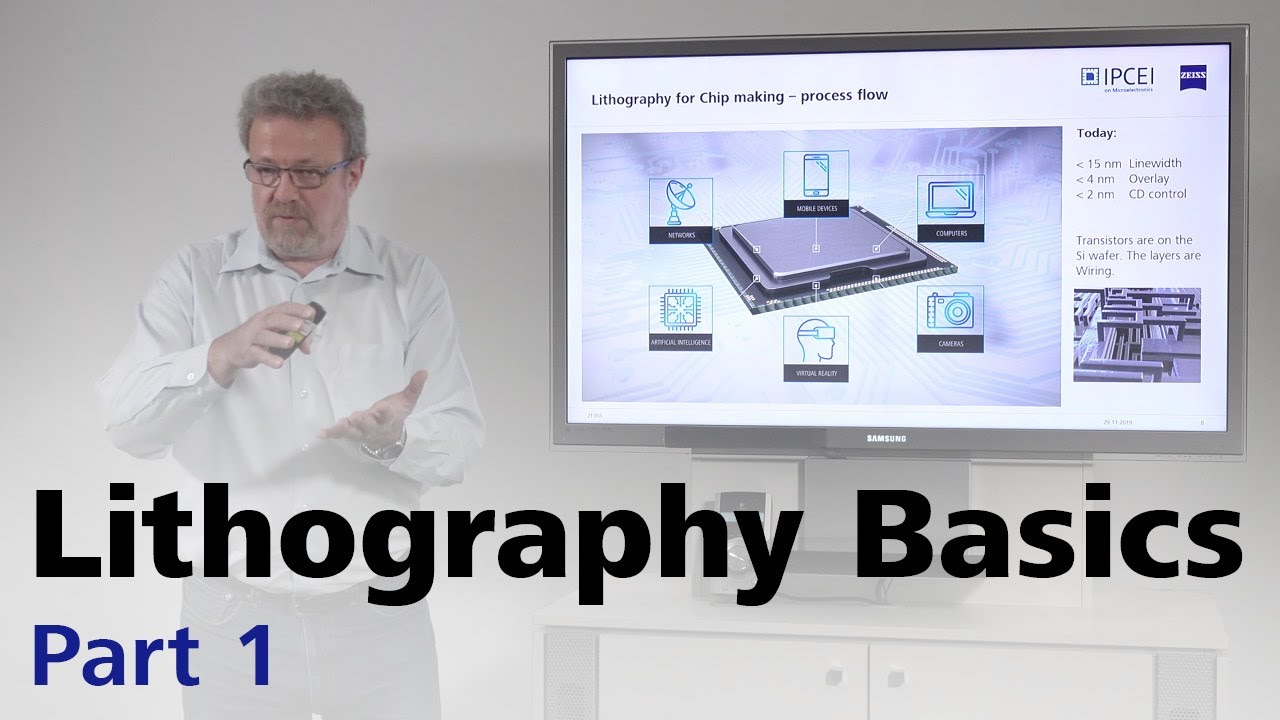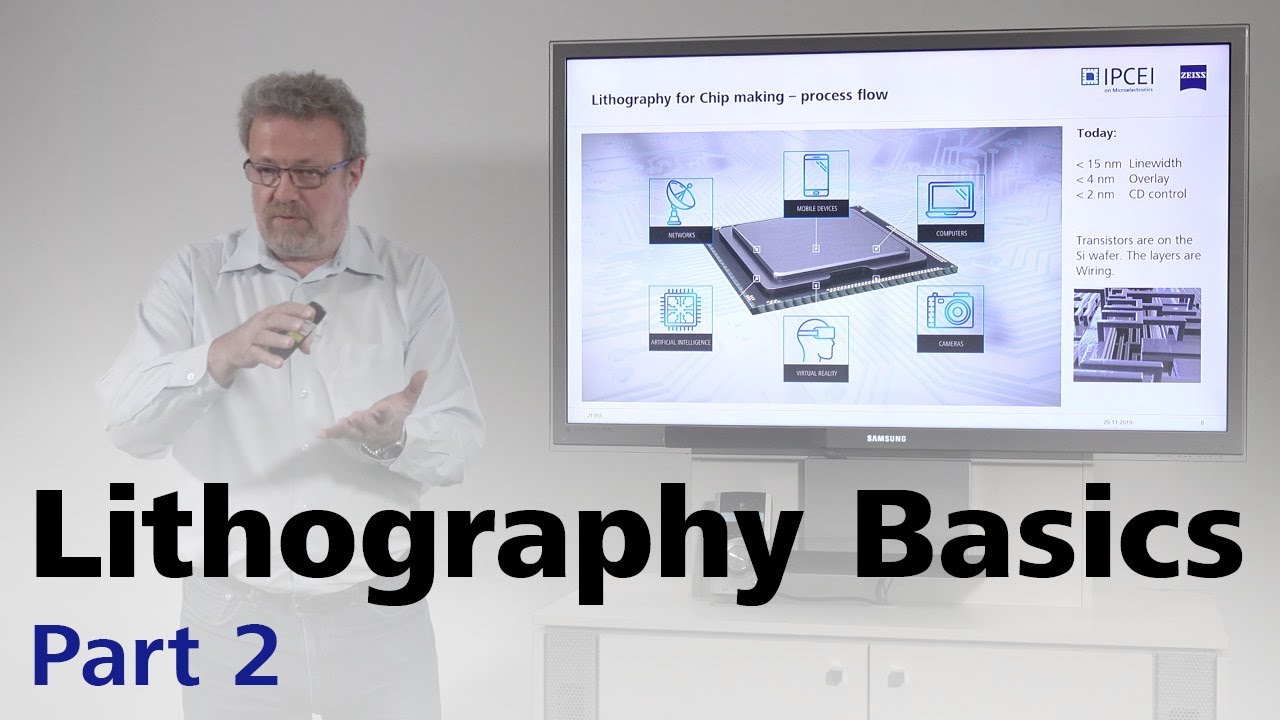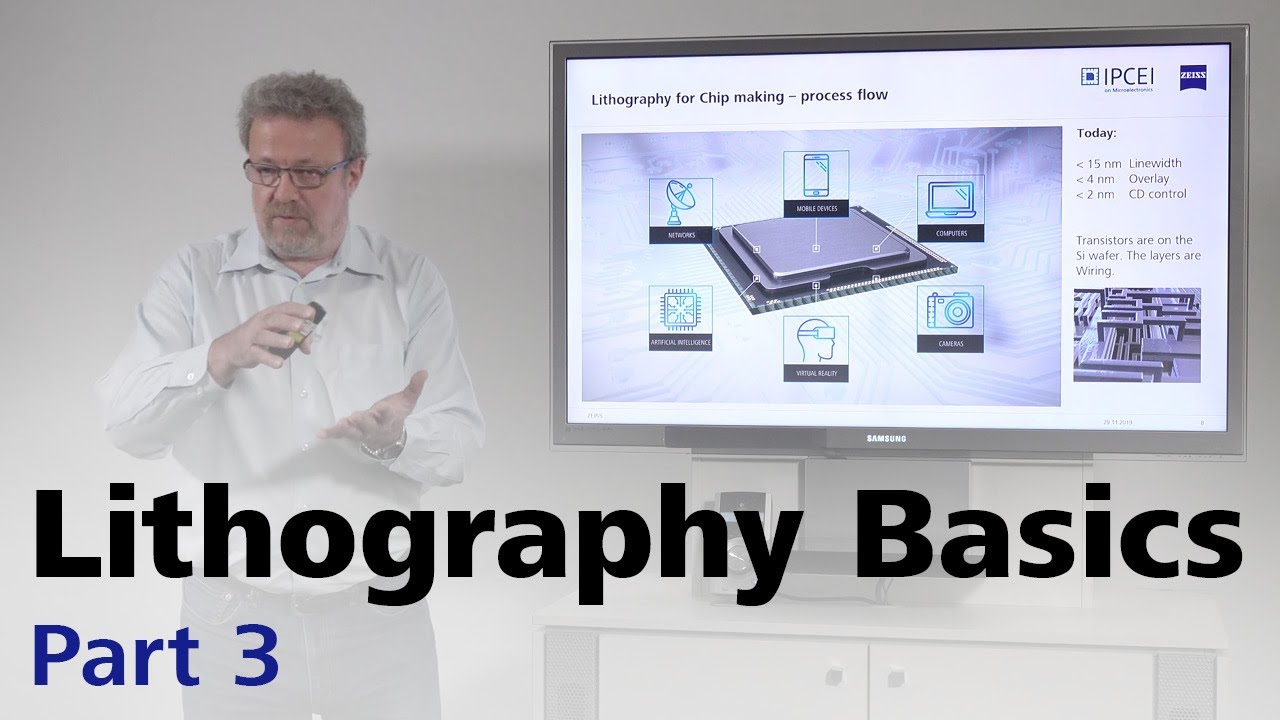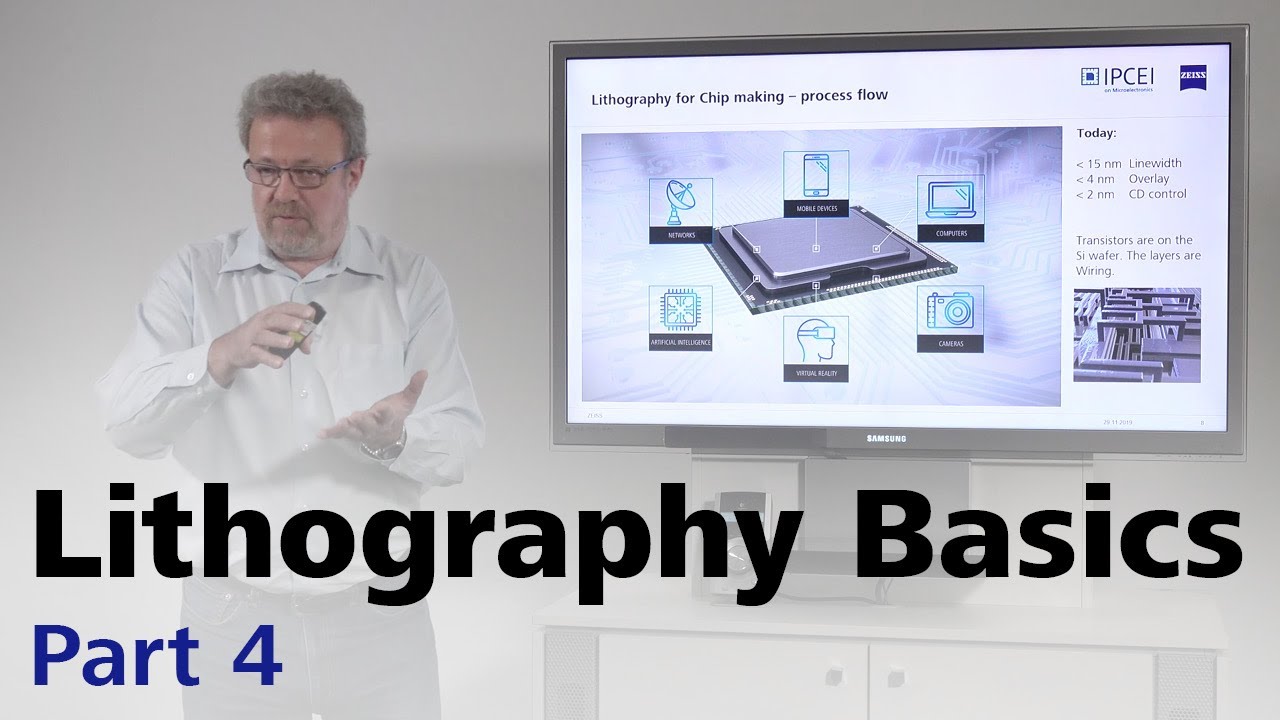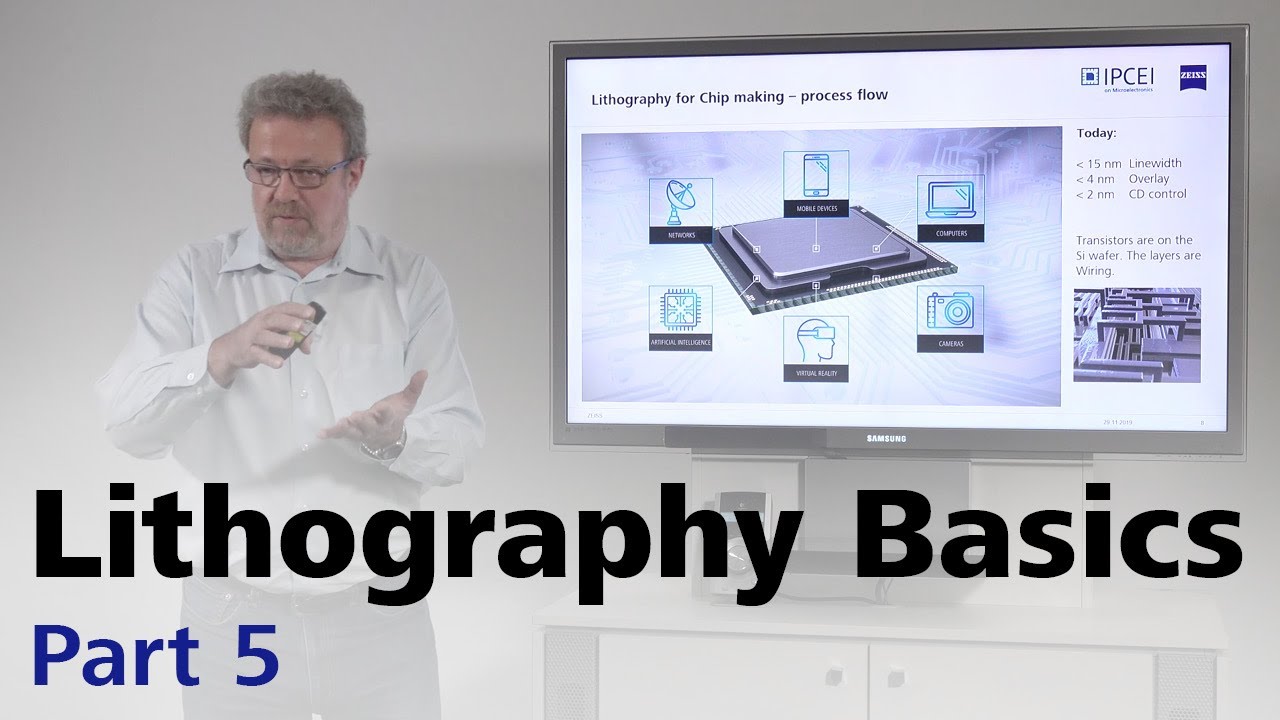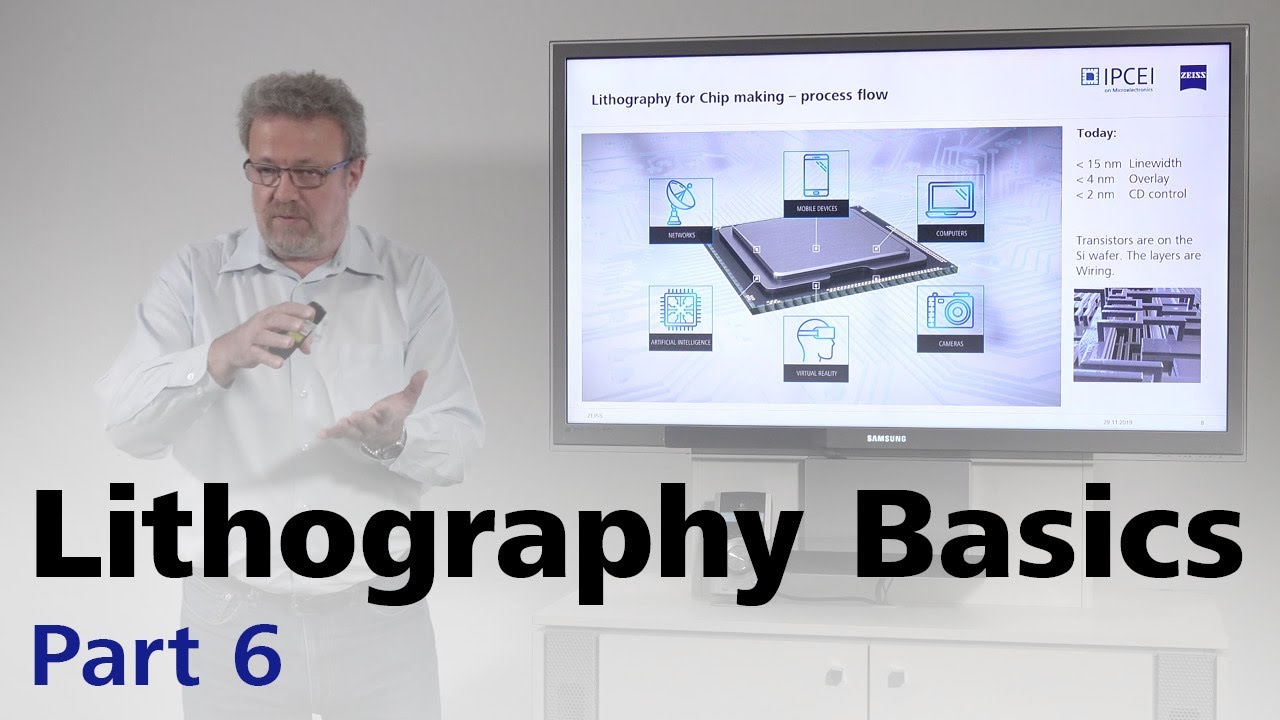The semiconductor revolution is largely based upon the ability to manufacture identical complex objects in enormous quantities just by taking pictures of them, a process known as photolithography. But how does it work? This exploration begins with the basics: transistors, Moore's Law, and the exponential growth in the number of transistors manufactured, which is now approaching the number of stars in the visible universe.
Photoresist is the “secret sauce” of microelectronics. It is a chemical coating which, applied to a silicon wafer, is rendered soluble or insoluble by exposure to light. Post-exposure, the soluble part is washed away, leaving a mask which protects portions of the chip not to be affected by the next processing step. This sounds simple, but achieving nanometre resolution and avoiding optical distortion are formidable challenges which have been surmounted as device geometries shrink.
This series is very enlightening. Considering that much of my intellectual existence is centered upon devices whose basic function remains largely mysterious to me - understanding the technique of putting billions of transistors inside my laptop helps considerably. I find it far more difficult to get a hold on the lines of code in the site development log. I have moments when I really envy John Walker, who was a witness and participant in the literal explosion of computer tech. I wish I had a small fraction of his understanding - the kind of understanding which can only arise from living and working within the events which comprise the computer revolution. I wish I had been some small part of that, rather than an ‘end user’.
How do you make an image whose feature sizes are smaller than the wavelength of light you're using? It might seem like black magic, but it's really a matter of light magic, involving a bag of dirty tricks called “Optical Proximity Correction” (OPC), which take into account the wave properties of light and construct masks which often look nothing like the image they create, but create interference patterns which form the desired features. “Think of your semiconductor wafer as a 160 gigapixel camera image sensor.”
Photoresists (see Part 3) are highly nonlinear (or, as a photographer would say, high contrast). Getting the “dose” (or exposure) correct is critical for imaging small features, and this is a tradeoff between focus and illumination, which involves some intricate measurements and calculations.
The ultimate limit on the feature size photolithography can produce is set by the wavelength of the light it uses and the physics of electromagnetism, but clever device designers have invented a bag of dirty tricks to squeeze more onto a chip. The series concludes with a survey of some of these techniques, including multiple exposure and etching cycles, atomically deposited spacers, self-assembling molecules, and three-dimension stacking of transistors.
